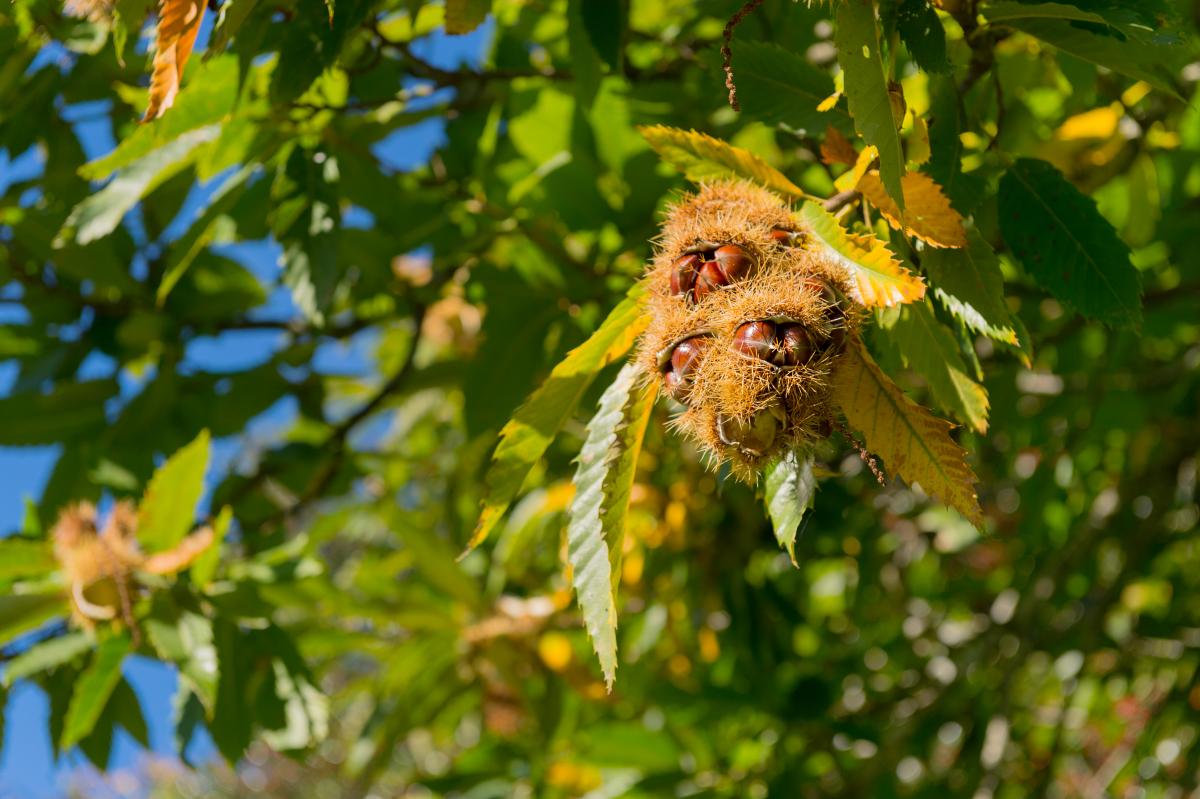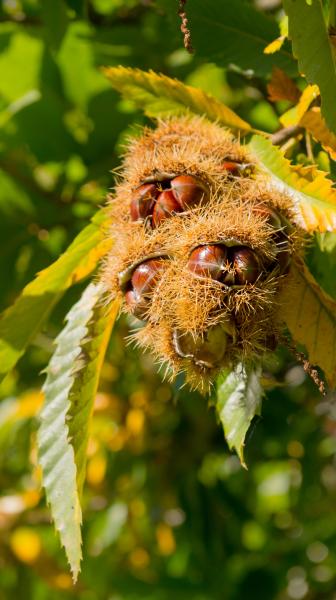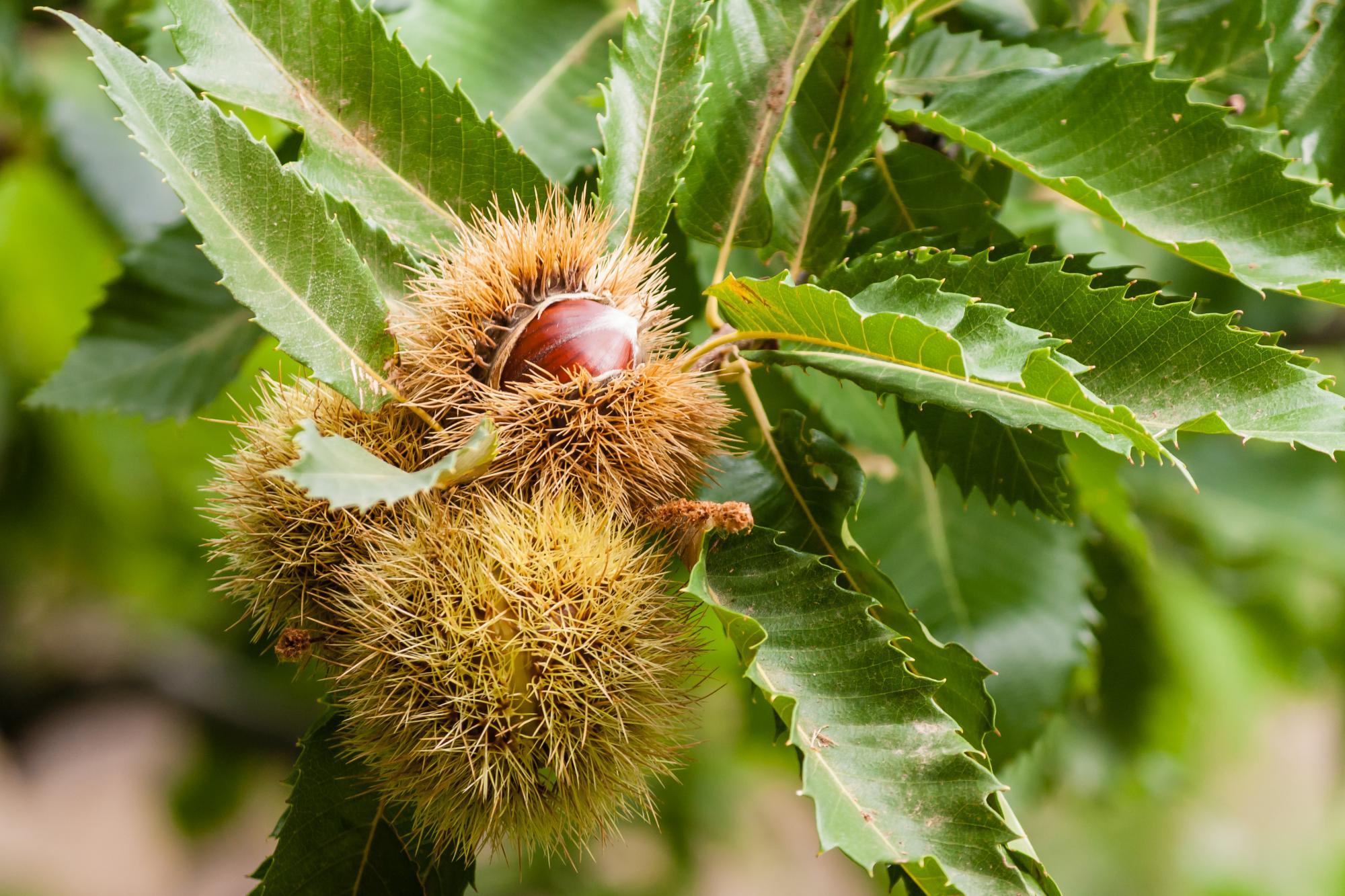
Species Name: Castanea sativa
The sweet chestnut is a large deciduous tree, which can grow up to 35 m tall, and live for around 700 years. Although not native to Britain, it has become naturalised, meaning it has adapted to the climate and conditions here, and now grows in parts of Britain - notably, South-East England.
The bark of a mature sweet chestnut is brown with verticle cracks, spiral fissures may develop as the tree ages. Young trees are more of a silvery-purple colour.

Leaves are light to dark green colour, long, with a serrated ‘toothed’ edge, running the length of the leaf.

The most identifying feature other than the leaves, are the green, spikey cases, which are made up of four lobes, and encase and protect the chestnuts growing inside. There can be between one to four nuts inside each case.

Originating from the Mediterranean, the sweet chestnut tree is normally found in warmer, more temperate regions of the UK, being fairly prominent in the southeastern regions of England. They do, however, thrive here in the Heart of England Forest.
Due to the abundant production of food for ancient people, the sweet chestnut tree has symbolised provision, abundance and longevity, and would have been a key part of the harvest time in autumn. The abundance and “life-giving” nature of the tree has also given it a connection to fertility, believed by some ancient peoples/tribes, to help women conceive.
Along with the horse chestnut, the sweet chestnut tree is believed to have been introduced to Britain, by the Romans, as a stable food source to be grown. Still to this day, people use sweet chestnuts for food, with the most popular way of preparing them roasting. It takes around 15 - 25 years to bear chestnuts.
The tree is very good for timber, and is coppiced to allow the production of timber and poles of varying diameters. A revival of this has occurred in Kent and the southeast region of England.
In 2015, a new pest of the sweet chestnut tree was discovered. The oriental sweet chestnut gall wasp lays its eggs in the developing buds, leaves and leaf stalks (petioles) of the tree. This then causes abnormal growths, called galls. In small numbers, this does not affect the tree too much, however larger amounts of galls can weaken the tree, and potentially make it more susceptible to other pests or diseases.
2% of the trees we are planting in the Forest this season are sweet chestnut trees.




